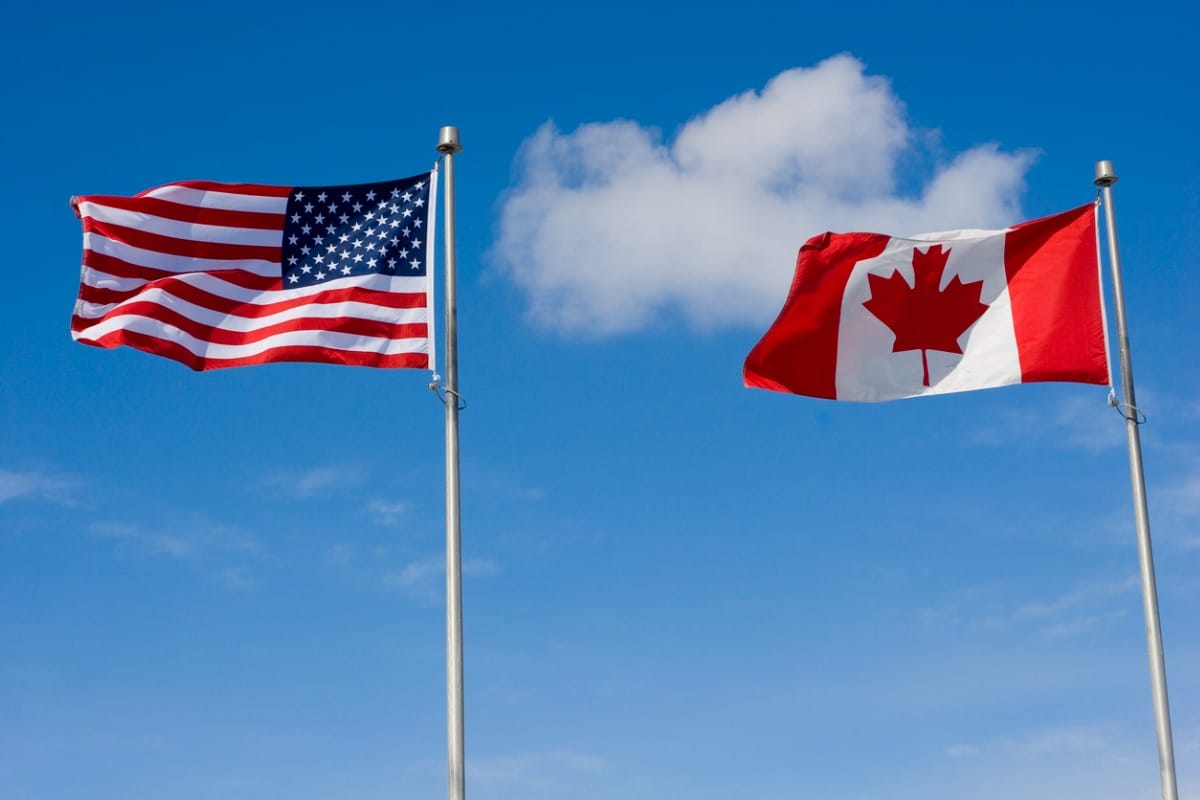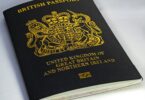More than 10,000 individuals relocate to Canada from the United States annually. A lot more relocate to Canada in search of a job and education. This article will show how you can be among them as it addresses your immigration goal to Canada from the US.
Relocation to Canada as a Skilled Worker
Express Entry
Express entry remains Canada’s primary method of managing skilled worker applications for permanent residents. The United States is a leading source nation for those who relocate to Canada via express entry. A significant benefit of the express entry relocation choices system is that applications are run within six months or less. United States nationals and residents naturally have a strong opportunity of being requested to make an application for Canadian permanent residency using express entry, remarkable for their strong language proficiency, skilled work background, and high level of schooling. Three skilled federal worker relocation programs are organized under the express entry system, which results in permanent residency in Canada.
– The Federal Skilled Worker Program (FSWP) arranged for skilled workers with international employment skills.
– the Canadian Experience Class (CEC) for skilled workers with Canadian employment skills
– the Federal Skilled Trades Program (FSTP) for skilled workers with qualifications in an experienced trade.
Options For Relocating To Canada Using Express Entry
Provincial Nominee Program (PNP)
Like the United States, Canada is separated into various jurisdictions, described as provinces and territories. The provinces, in several ways, are similar to the various states that make up the US. Hence, contrary to American territories, the provinces and territories in Canada have a vital position to play in specifying who is accepted into these jurisdictions as new immigrants. The PNP can be a good beginning point for United States nationals and residents who understand which region or territory they desire to live in and others who possess certain mastery and employment skills requested by a particular region or territory. If you are qualified for Express Entry, there is another advantage to presenting an Express Entry profile. Applicants assigned by a Canadian region or province with a profile in the express entry collection obtain an extra 600 points towards their CRS (Comprehensive Ranking System) mark, assuring them an ITA ( Invitation to Apply) for permanent residence in Canada.
Family Sponsorship
Nationals and permanent residents of Canada can sponsor their partner or common-law mates to receive permanent residence status in Canada. As Canada identifies same-sex marriage, partners of the same sex may apply for reunification as long as they satisfy all of Canada’s criteria qualification provisions. The sponsoring of Canadian nationals and the individual who is sponsoring has to be endorsed by Immigration, Refugee, and Citizenship Canada so that the sponsored individual can be approved for permanent resident status. To obtain a visa using this relocation scheme, the person sponsoring and the persons being sponsored must demonstrate that their relationship is eligible under one of these three classes: spouse, common-law partners, and conjugal partner. The processing criteria for a spousal sponsorship application in Canada is about one year from the day the application is obtained.
Employment in Canada
Getting a Canadian work visa, described as a work permit in Canada, is often a vital stage towards getting employed legitimately in Canada on temporary grounds. You and your potential employer may have to receive a document described as Labor Market Impact Assessment (LMIA) before you can start a job in Canada. Hence, many work permit handlers in Canada do not require an LMIA. In most situations, a Labor market Impact Assessment is required as it administers proof that your job in Canada is likely to have a neutral or favorable impact on the local labor market. When the LMIA is approved, you will be able to make an application for a temporary work permit from Immigration, Refugee, and Citizenship Canada. There are several chances to hasten the procedures, based on your profession and the employment you intend to get in Canada.
Global Talent Stream
This is an aspect of Canada’s Global Skills Strategy. The federal scheme permits employers in Canada in highly developed IT firms to facilitate the employment of skilled international employees when Canadians are not open for certain job roles. The employment procedures under this fast-track program involve satisfying specific conditions, including concluding an LMIA, devotion to specific salary conditions, and others. IRCC strives to process work permit applications from the Global Talent Stream in less than a month.
Canada-United States-Mexico Consensus
Some kudos to the Canada-United States-Mexico agreement, which was formerly described as the North American Free Trade Agreement and as well described as USMCA. United States nationals can gain from streamlined procedures when applying for a temporary work permit in Canada. Work permits provided under the requirements of the CUSMA consensus typically do not need an LMIA. United nationals may get employed in Canada using CUSMA in one of the following classes.
CUSMA Professional
A CUSMA professional must be eligible to get employed in one of the 60 targeted vocations, including law, finance, teaching, and more.
CUSMA intra-company transfer
People transferred from the United States within a CUSMA firm can be provisionally sent to Canada to work for a branch, subsidiary, or related to their employer. These people must have worked steadily for the United States employer for the least duration of one of the last three years. They may be hired by the firm at the time of their application in a role regarded to be executive, supervisor, or which has to do with specialized understanding.
CUSMA Traders and Investors
A United States CUSMA marketer must prove a plan to trade considerable product or service trade between Canada and the United States. A CUSMA investor must prove that they have created a significant investment in a new or existing business in Canada or are striving to go into Canada to grow and run the Canadian enterprise.
Intra-Company Transfer
Since Canada is the US’s biggest trading association, many American enterprises have related offices, branches, or subsidiaries in Canada. This program permits foreign enterprises to bring major workers to Canada without needing LMIA. Workers in managerial or professionalized understanding positions may be qualified to arrive in Canada with their families and be employed as an intra-firm transferee.
Work Without Work Permit
Some events may take place when those in the United States can execute work in Canada without requiring them to obtain a temporary work permit. This has to do with people who engage in business or trade exercises in Canada but will not enter the Canadian labor market, collectively described as Business Visitors.
Working Holiday
The working holiday goes into the International Experience Class program and strives to promote foreign exchange between young individuals from various countries. United States nationals between 18 and 35 may receive an open work permit for one year using this program if they have been registered in a full-time post-secondary program at some point in the past year. Final-year students not coming back to study are qualified.
Business Migration
Beginning an enterprise in Canada
The objective of Canada’s business immigration scheme is to entice investors, self-employed, and entrepreneurs from outside Canada with venture capital, enterprise acumen, and entrepreneurial experience.
Provincial Business and Entrepreneurs Programs
Canadian regions and territories possess a vital position to play in settling economic settlers in their province, and several others are seeking enthusiastic and inventive entrepreneurs to assist in developing their economies. Provinces and territories in Canada can assign people from immigration to their province due to their standards. A lot of PNPs have streams devoted to business immigration.
Self-Employed individuals Program
People who desire to live in one of Canada’s regions as skilled athletes or artisans can receive a business immigrant visa for themselves and their close family members. This scheme is planned to bring people to Canada who will be self-employed. Candidates must possess either applicable skills in cultural exercises or athletics.
The Start-up visa program
Using this national start-up visa program, immigrant entrepreneurs can grow their enterprises in Canada. This program, identified as one of the most special immigration streams in the world, approves permanent residents to settlers while assisting them to live well in Canada.
Work permit choices
For many entrepreneurs, the quickest way to enter Canada is to receive a temporary work permit. Using the CUSMA investors stream, nationals of the US who invest in new or existing enterprises in Canada may be permitted to make an application for an investor work permit to run their businesses in Canada. Entrepreneurs who plan to maintain the functioning of an existing business overseas while developing in Canada may be qualified for an intra-firm transfer work permit. Individuals who are principal proprietors of a business in Canada can strive to receive an owner-operator work permit. United States residents and nationals also have the choice to go into Canada using the Global Talent Stream. Employers operating in highly developed sectors or desiring to employ highly experienced global IT experts can use this stream to make applications for work permits and take advantage of the fast application processing duration.
Study in Canada
Currently, some 15,000 United States nationals study in Canada annually. Above 1,500 institutions are permitted by IRCC to accept international students. International students can get employed while studying in Canada, which assists in obtaining employment skills. Graduates of qualified Canadian universities can apply for an open work permit, described as a Post-Graduation Work Permit. The PGWP permits recent graduates to obtain beneficial Canadian work skills, making them qualified for PR and elevating their chances of successfully receiving immigration status.
Canadian Citizenship
United States nationals and residents who relocate to Canada and settle there for some years may finally apply to become citizens of their adopted nations. This is a procedure described as naturalization, and Canada possesses one of the most liberal and inviting naturalization procedures in the world. An individual can be a national of the United States and Canada.







